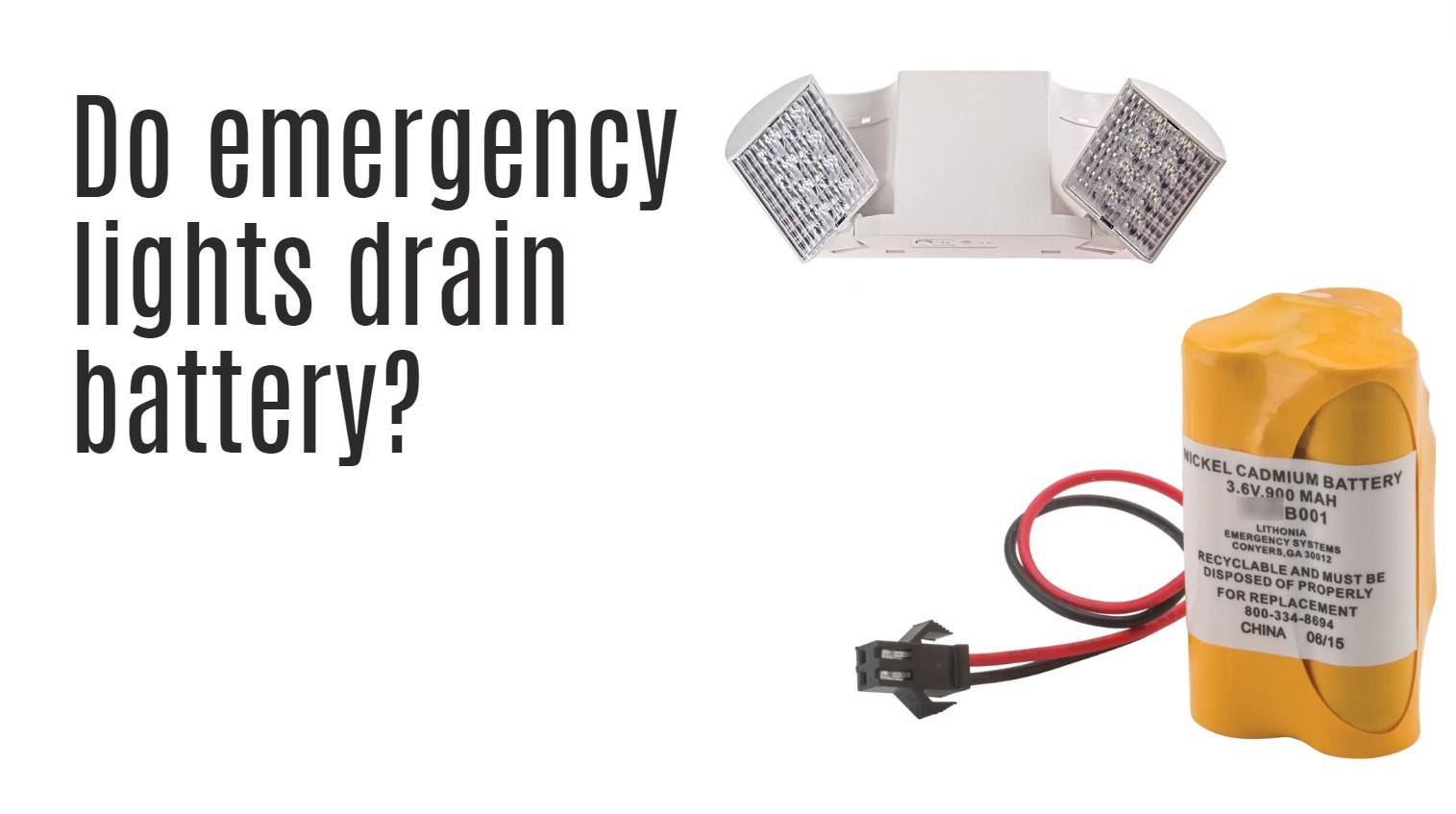Explore the world of emergency lights, crucial for power outages and unforeseen situations. Uncover their functionality and dispel myths about battery drain. Delve into the truth behind these illuminating devices, ensuring you’re well-prepared for emergencies without compromising battery life. Grab your flashlight, and let’s shed light on the fascinating realm of emergency lighting!
Types of emergency lights
Discover emergency lights designed for specific needs:
- Exit Signs: Found in buildings, these signs use LEDs or bulbs, powered by batteries or electricity, guiding evacuations.
- Emergency Lighting Units: Installed throughout buildings, these units provide illumination during power outages, with multiple fixtures connected to batteries or generators.
- Portable Emergency Lights: Compact and rechargeable, these lights are ideal for outdoor activities and roadside emergencies, ensuring preparedness in various situations.
Choose the right type based on your requirements, and stay tuned for insights into the technology behind emergency lights in our upcoming blog section.
How do emergency lights work?
Emergency lights are a vital part of safety plans, ensuring visibility during power outages. Ever wondered how they operate? Let’s uncover the workings of emergency lighting.
- Battery-Powered Brilliance:
- Emergency lights rely on batteries for power during outages.
- LEDs (light-emitting diodes) are commonly used for their efficiency and longevity.
- Automatic Activation:
- The system activates automatically when power is lost, aiding safe navigation.
- Regular testing and maintenance are essential to ensure reliable functionality.
- Battery Efficiency Matters:
- Quality rechargeable batteries are crucial for prolonged runtime.
- Opt for reputable brands with longer lifespan ratings for better performance.
- Standby Mode and Battery Drain:
- Emergency light batteries remain idle in standby mode, activating only during outages.
- High-quality batteries experience minimal drain in standby, preserving energy.
- Maintenance for Longevity:
- Routine inspections, checking battery life, and keeping terminals clean contribute to longevity.
- Proper maintenance practices, including corrosion prevention, enhance battery performance.
Conclusion: Understanding the operation of emergency lights, from automatic activation to battery efficiency, ensures their reliability. Regular maintenance and choosing quality batteries are key to optimal performance during critical times. Stay tuned for our next section, where we debunk common misconceptions about emergency light batteries.
The impact of battery on emergency lights
Emergency lights play a crucial role in providing illumination during power outages, and their performance is intricately tied to the type and condition of their batteries.

1. Battery Importance:
- Batteries serve as the lifeblood of emergency lights, supplying the necessary power during electricity disruptions.
- Without a dependable battery, these lights would be rendered ineffective precisely when their function is most critical.
2. Capacity and Quality:
- The operational duration of emergency lights is directly impacted by battery capacity and quality.
- Opting for higher-capacity and high-quality batteries ensures prolonged and optimal lighting performance.
3. Maintenance Matters:
- Regular checks and cleaning of battery terminals are indispensable for maintaining the proper functioning of emergency lights.
- Proactive maintenance practices are essential to prevent unexpected failures precisely when they are needed the most.
4. Charging Misconceptions:
- Contrary to common belief, leaving emergency lights plugged in doesn’t necessarily result in battery drain or reduced lifespan.
- Modern units often incorporate smart charging technology to prevent overcharging and extend battery life.
5. Battery Selection:
- Choosing the appropriate battery type, whether lead-acid or lithium-ion, is critical for ensuring optimum emergency light performance.
- Different battery types offer varied advantages concerning energy density, weight, cost, and rechargeability.
Understanding the pivotal role batteries play in the operation of emergency lights is paramount for ensuring reliable illumination during unforeseen circumstances. Investment in quality batteries, coupled with regular maintenance and timely replacements, guarantees that emergency lights are always ready to fulfill their purpose in times of darkness.
Battery life and maintenance tips
Ensuring the longevity and functionality of emergency light batteries is vital for their reliability during critical situations. Simple maintenance practices can go a long way in achieving this goal.
1. Battery Selection:
- Choose high-quality rechargeable batteries with extended shelf life for cost-effectiveness and dependable performance.
- Opting for the right battery type contributes significantly to the overall lifespan of your emergency lights.
2. Regular Testing Routine:
- Implement a monthly or quarterly testing schedule to check charge levels and functionality.
- Early identification of issues allows prompt corrective actions, maintaining optimal battery performance.
3. Proper Storage Practices:
- Store emergency light batteries in a cool, dry place, away from direct sunlight or extreme temperatures.
- Avoid exposure to corrosive substances, following manufacturer guidelines for extended battery life.
4. Mindful Charging:
- Adhere to recommended charging cycles to prevent overcharging, a factor that can reduce battery life.
- Unplug emergency lights promptly once fully charged to avoid unnecessary strain on the batteries.
5. Watch for Warning Signs:
- Regularly inspect battery packs for signs of deterioration, such as swelling or leakage.
- Immediate replacement of compromised batteries with reputable brands ensures continued safety and reliability.
Incorporating these straightforward maintenance practices into your routine guarantees that your emergency lights will always be prepared for unexpected situations, providing a sense of security and assurance.
Common misconceptions about emergency light batteries
Misconceptions about emergency light batteries abound, leading to confusion. Let’s unravel these myths and clarify the truths behind how these batteries function.
1. Battery Drain Misconception:
- Myth: Emergency lights consume battery power even when not in use.
- Fact: Modern lights feature energy-efficient systems, activating batteries solely during power outages or emergencies.
2. Continuous Plugging Myth:
- Myth: Keeping the emergency light plugged in all the time shortens battery life.
- Fact: Leaving it plugged is harmless with automatic charging systems; occasional discharge and recharge cycles are essential.
3. Branded vs. Generic Belief:
- Myth: Using non-branded batteries saves money without compromising performance.
- Fact: Non-branded batteries may lack quality standards, posing safety risks, and may fail unexpectedly.
4. Lifespan Reality:
- Myth: Emergency light batteries last indefinitely.
- Fact: Batteries have a limited lifespan; degradation occurs over time, necessitating regular checks and timely replacements for reliability.
Understanding the truths about emergency light batteries dispels misconceptions. Opting for quality batteries, adopting proper charging habits, and regular inspections ensure your lights are reliable when needed – minus unnecessary worries about battery drainage.
Tips for choosing the right battery for your emergency lights
Selecting the appropriate battery for your emergency lights is vital for ensuring their reliability. Here are concise tips to help you make an informed choice:
1. Battery Type Consideration:
- Evaluate the battery types like lead-acid, nickel-cadmium (NiCd), and lithium-ion (Li-ion).
- Understand their pros and cons to match your specific needs.
2. Capacity Checking:
- Measure battery capacity in ampere-hours (Ah).
- Choose a battery with sufficient capacity based on your required outage duration.
3. Reliability Focus:
- Opt for batteries from reputable brands with a proven track record.
- Read customer reviews and seek professional recommendations for reliability.
4. Maintenance Assessment:
- Consider maintenance requirements, such as electrolyte level checks.
- Choose a battery aligning with your maintenance preferences and capabilities.
5. Charging Options:
- Assess the charging methods and equipment compatibility.
- Ensure you have access to chargers suitable for your chosen battery.
6. Cost-Effectiveness Evaluation:
- Balance upfront costs and long-term value.
- Factor in lifespan to avoid frequent replacements and ensure cost-effectiveness.
By considering battery types, capacity, reliability, maintenance, charging options, and cost-effectiveness, you can select a battery that guarantees your emergency lights illuminate reliably during outages. Regular testing and adherence to manufacturer’s guidelines are crucial for optimal performance.







